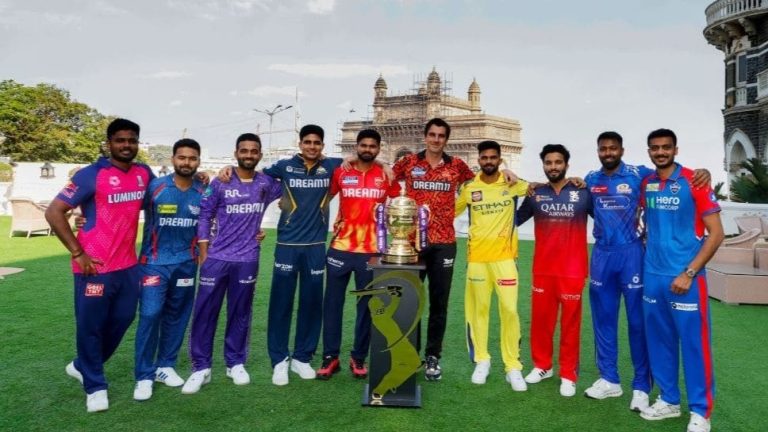The Indian Premier League (IPL) has become one of the most influential forces in modern cricket. Since its inception in 2008, it has not only redefined the sport’s entertainment value but also transformed the global cricketing ecosystem. The league’s unique blend of star power, financial strength, and innovation has reshaped how the game is played, viewed, and developed across the world.
Revolutionizing the Game’s Format
Before the IPL, Twenty20 Jeetbuzz cricket was still finding its place among traditional fans. The league showcased how the T20 format could combine excitement with high-quality competition. Its success proved that shorter formats could coexist with — and even enhance — traditional forms of cricket like Tests and ODIs.
This revolution encouraged other countries to develop their own T20 leagues, such as the Big Bash League in Australia, the Caribbean Premier League, and The Hundred in England. Together, these leagues have made cricket more dynamic and globally accessible than ever before.
Creating a Global Platform for Talent
The IPL has become a melting pot of cricketing talent. Players from all over the world — from established stars to rising youngsters — share the same stage, exchanging skills, cultures, and experiences.
For many cricketers, performing in the IPL has opened doors to international recognition. Unknown players from smaller cricketing nations have used the platform to gain contracts, endorsements, and opportunities to play in other leagues. The exposure has helped countries like Afghanistan, Nepal, and Ireland accelerate their cricketing growth and competitiveness.
Financial Growth and Professionalism
The IPL’s financial success has set new benchmarks in sports management. It introduced lucrative player auctions, sponsorship deals, and broadcast rights that generated billions in revenue. These financial rewards have elevated cricket’s professional standards, giving players, coaches, and franchises the resources to invest in training, analytics, and technology.
The league’s profitability also encouraged national boards to rethink their structures, ensuring that domestic players are compensated fairly and that local tournaments receive proper funding. The financial ripple effect of the IPL has thus strengthened the sport’s global infrastructure.
Technological Innovation and Fan Engagement
The IPL has been at the forefront of adopting new technologies to enhance the viewing experience. From advanced broadcasting techniques like Spidercam and ultra-motion replays to data-driven analysis and real-time fan interactions, the league has turned cricket into a high-tech spectacle.
Social media engagement, fantasy cricket, and streaming platforms have also allowed fans across continents to connect with the game Jeetwin in real time. This digital revolution has not only expanded cricket’s fan base but also made it more inclusive and interactive.
Influence on Player Fitness and Strategy
With matches often decided by fine margins, the IPL has raised the bar for fitness, strategy, and adaptability. Teams now rely heavily on performance analytics, player workload management, and tactical matchups.
This data-driven approach, once rare in cricket, has now become standard practice across all formats. Players who perform in the IPL often return to their national teams more confident, versatile, and strategically aware — improving the overall quality of international cricket.
Cultural Exchange and Global Unity
The IPL has also fostered cultural exchange and mutual respect among players from different nations. Shared dressing rooms and cross-border friendships have broken down barriers that once existed due to intense international rivalries.
This collaboration has humanized the sport, reminding fans that while competition fuels passion, cricket ultimately thrives on unity and shared love for the game. The cultural blend of the IPL has made cricket more global in spirit and identity.
Boosting Youth Development and Inspiration
For young cricketers around the world, the IPL represents a dream stage. Watching their idols perform under lights in packed stadiums inspires countless youngsters to take up the sport seriously.
Moreover, the league’s franchise academies and grassroots programs invest heavily in nurturing young talent. These initiatives not only develop Indian cricket but also influence how other countries structure their youth systems. The IPL has thus become a model for how sports leagues can balance entertainment with player development.
Criticisms and Challenges
Despite its success, the IPL has faced criticism. Some purists argue that it prioritizes money and entertainment over the game’s traditional spirit. There are also concerns about player burnout due to overlapping schedules and the growing dominance of franchise cricket over national commitments.
However, these challenges have prompted important conversations about balance — between formats, finances, and player welfare — ensuring that cricket continues to evolve sustainably.
Conclusion
The IPL’s impact on global cricket development is undeniable. It has revolutionized the sport’s format, created unprecedented opportunities, and brought the game closer to fans around the world.
More than just a tournament, the IPL has become a catalyst for innovation, inclusion, and excellence in cricket. As it continues to grow, its influence will shape not only the future of T20 cricket but the very identity of the sport itself.


